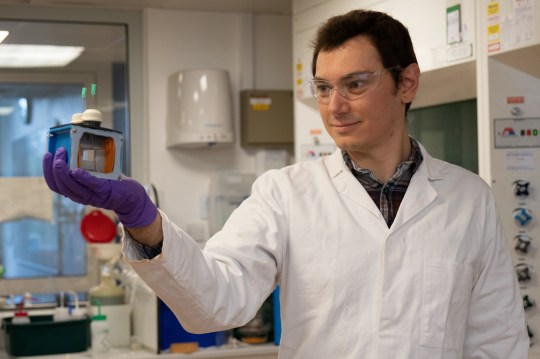
In recent years, we have made plenty of progress with sustainable energy, but there's still a lot of work left to do. Now, there is encouraging news on the development of an 'artificial leaf' which could lead to the production of truly 'clean' synthetic fuel.
In that case, the key step towards this achievement is the sustainable production of syngas (or synthesis gas), which a mixture of carbon monoxide and hydrogen. Syngas is currently widely used in the production of various fuels, drugs, plastics, and fertilizers; it can be made in several ways, but usually involves the leftover products from coal or petroleum-based materials. The final product is not always carbon neutral.
The new leaf device is dipped in water and powered by sunlight - yet can still operate on cloudy days; it produces sustainable syngas without releasing any carbon dioxide into the air.

nanonov/iStock
The leaf mimics the photosynthesis that we see in plants, combining water, incoming light, and carbon dioxide with a cobalt catalyst called perovskite. On the other end you get hydrogen and carbon monoxide, which can then make syngas.
While the efficiency of the machine is currently low, it should be possible to improve that with further research. It is the unique combination of materials and catalysts, the scientists say, which puts their system ahead of similar devices.

Virgil Andrei
While renewable power sources such as solar and wind are becoming better and better at producing electricity, the energy demands of the world go way beyond electricity – shipping, heavy transport, and air travel all need cleaner fuels, which is where that artificial leaf could come in.

Virgil Andrei and Professor Erwin Reisner.(Chanon Pornrungrog/Cambridge University/PA Wire)
In terms of the new research, the team members said they're confident in their catalysts and combination of materials, and this bodes well for the future – eventually, syngas may not be needed as an intermediate stage. The production could proceed straight to carbon-neutral liquid fuel.

Chanon Pornrungrog/Cambridge University/PA Wire
The research was published in Nature Materials.














COMMENTS